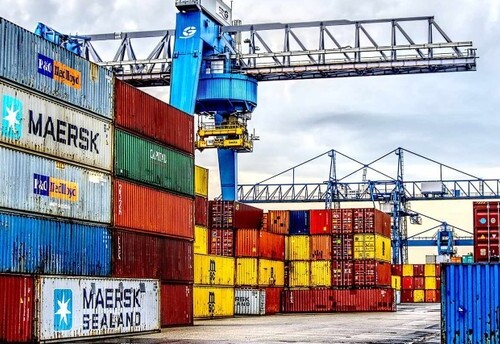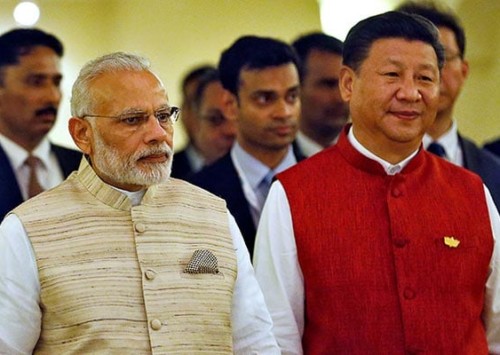RCEP races ahead, India opts out

PM Modi conveyed India’s decision not to join the China-backed RCEP deal at a summit meeting of the 16-nation bloc
Flagging domestic concerns-fear of heightened trade deficit and a perceived threat to small producers, agriculture, including dairy and poor free trade record, India opted out of Regional Comprehensive Economic Partnership (RCEP).
Two years after US President Donald Trump withdrew from a 12-nation deal known as the Trans Pacific Partnership, Indian Prime Minister Narendra Modi has followed his suit to pull India out of the 16-nation grouping led by China called as the Regional Comprehensive Economic Partnership (RCEP). Domestic concerns and protectionism has played a great part. The RCEP has moved ahead without India.
The Regional Comprehensive Economic Partnership bloc comprises 10 ASEAN group members (Brunei, Cambodia, Indonesia, Malaysia, Myanmar, Singapore, Thailand, the Philippines, Laos and Vietnam) and their six FTA partners – India, China, Japan, South Korea, Australia and New Zealand. The significance of RCEP is that it represents half the world population and two-fifth of GDP and trade. It’s also the fastest growing part of the world. It is global economic centre of gravity for the last four decades now. With India out of it the membership is 15-member trade deal.
Then why did India pull out?
There are half a dozen reasons that played in India pulling out of the trade deal. To join RCEP, India will have to take on commitments to eliminate tariff for about 90 pc of items from the ASEAN, Japan and South Korea, and over 74 pc from China, Australia and New Zealand.
The trade deficit will increase further in the China and India trade. In 2017-18, India exported goods worth USD 13.1 billion to China and imported goods worth USD 73.3 billion – creating a trade deficit of USD 63.1 billion.
Also, India ran a merchandise trade deficit with 11 out of the 15 other members of RCEP in 2018-19, totaling USD 107.28 billion. India’s overall merchandise trade deficit was USD 184 billion in 2018-19. In 2018-19, 34 pc of India’s imports were from this region, while only 21 pc of India’s exports went to this region. China is the biggest trade partner amongst them.
The Niti Aayog, in 2017, had published a report that pointed out that free trade agreements (FTA) have not worked well for India. It analysed multiple free trade agreements that India signed in the past decade. Among those were the FTAs with Sri Lanka, Malaysia, Singapore and South Korea.
Impact of RCEP
Indian farm and industry sector is worried about the impact of the RCEP on India. For example, the removal of customs duty on about 80-85 pc of items will result in Chinese goods flooding the Indian market even more.
It is feared that RCEP is likely to hurt Indian farm and dairy sector in a way no other trade agreement has. So far agriculture has been kept out of free trade agreements, a convention followed even in the ongoing EU-US free trade negotiations. Any reduction in tariffs cripple the Indian dairy sector, thus affecting the livelihood of nearly 100 million families. Similarly, threats are awaiting farmers who cultivate wheat and cotton (the challenge from Australia and China), oilseeds (challenge of palm oil import) and plantation crops (pepper, coconut, areca nut, cardamom, rubber etc). Indian dairy products would have to compete with those from Australia and New Zealand.
India wanted a key clause to be included in the RCEP pact for auto-trigger mechanism as a shield against sudden and significant import surge from countries.
What if India had joined the RCEP?
The RCEP agreement would complement India’s existing free trade agreements. Secondly, Indian exporters will get better access to markets of RCEP members, particularly China, Australia and New Zealand, as India already has trade deals with the other RCEP countries. Thirdly, the RCEP will facilitate India’s integration into sophisticated “regional production networks” that make Asia the world’s factory.
Fourthly, India enjoys a comparative advantage in areas such as information and communication technology, IT-enabled services, professional services, healthcare, and education services. In addition to facilitating foreign direct investment, the RCEP will create opportunities for Indian companies to access new markets.
By opting out of the deal for now India is not doing a great service to itself in the long run. The solution is not to opt out of deal instead undertaking reforms. Indian manufacturers face higher cost of energy and electricity, credit and capital, and logistics. It was only recently corporate tax rates in India were exorbitant. Now it has been corrected.
Another important question is how India is going to transform itself into an USD 5 trillion economy without an export strategy that excludes RCEP?
A significant issue is that RCEP allows tariff quota restrictions. This means that India had the options to restrict quantity that can come duty-free.
Why cannot India look for opportunities even as the China hosted the world’s first international import expo. The event that kicked off in Shanghai on November 5, pledged to import nearly USD 12 trillion worth of goods and services in the next five years.
Is there enough opportunities for India in this terms of exports and employment creation? Also can the Indian farmers’ income rise without liberalising the farm sector and deregulate export of farm products?
The RCEP deal would have also helped over a billion customers with cheaper and quality imports due to trade liberalisation. But what is important is that the decision found favour among stakeholders cutting political spectrum.
“When I measure the RCEP agreement with respect to the interests of all Indians, I do not get a positive answer. Therefore, neither the Talisman of Gandhiji nor my own conscience permits me to join RCEP,” Prime Minister Narendra Modi’s assertion at the RCEP summit was welcomed by Indians in one voice cutting across their political differences. According to India’s commerce minister Piyush Goyal, India is exploring its options for entering into free trade agreements with countries like USA, European Union, Japan and South Korea among others. Now it is to be seen what these trade deals hold for India!












